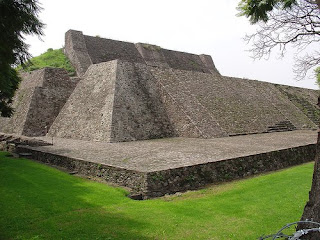Today a lot of artists around the world are heading to scientific labs and corporate with scientists to try to find answers to questions about the nature of life, evolutionary thinking, and moral ethics. They start to involve biotechnology in their art, both to experiment with new biotechnologies that may be useful in the future, and to engage audience.
One of the most famous biotech artist that professor Vesna talked about is Kathy High, an interdisciplinary artist working in the area of technology, science, speculative fiction and art. She produces videos and projects that pose queer and feminist explorations into areas of bio-art and animal/interspecies. One of her renowned project
Blood Wars is a tournament between individuals' white blood cells as they strive for dominance on the petri dish. This project not only promotes participants' understanding of physiological functioning of circulatory and immune system, but also questions the traditional ideas of racial superiority, kinship, blood letting, competition, dominance, and different imageries used to linking blood to sacrifice, vampires and blue bloods.

Another really interesting project that professor High is working on is
Trans-Tomagotchi, which is an online video game. It includes different types of "diseased-animals", animals that are bred, raised or developed for disease research, and asks players to identify with their "disease" type animal, and explores the kind of care needed for the diseased animal, and their disease, including watching the administering of food, play, rewards, medicines, etc.

Other than these interactive projects, there are many other projects that are designed to question the powerful genetic tools, and possibilities of how these can affect living organism. One of the creations of the Tissue Culture and Art project is called "Victimless Leather". It's a tiny jacket made from living mouse tissue, housed in an environmentally controlled glass ball. It is meant to question what roles human have in manipulation of life. Unfortunately, the scientists eventually had to turn off the jacket's life support as the cells began to multiply rapidly.
There are many other interesting projects that can be explored, like "bulletproof skin", "MEART - The Semi-Living Artist", etc. Many of these bio-art projects are as intriguing as they are thought provoking.
Citations:
Vesna, Victoria. "5 BioArt Pt3." YouTube. Uconlineprogram, 17 May 2012. Web. 08 May 2016.
High, Kathy. "Blood Wars." Blood Wars. SymbioticA - Centre for Biological Excellence. Web. 08 May 2016.
High, Kathy, and David Balluff. "Trans-Tomagotchi." Kathy High: Projects: Trans-Tomagotchi. Web. 08 May 2016.
Delgado, Rick. "How Artists Are Blending Biotechnology And Art." MakeUseOf. FutureTech, 08 May 2015. Web. 08 May 2016.
Miranda, Carolina. "Weird Science: Biotechnology as Art Form." ARTnews. ARTnews.Ltd, 18 Mar. 2013. Web. 08 May 2016.
 On the left is an oil painting called Black Frame, created in 1934 by Josef Albers, the first art teacher at the college. Josef Albers was keen on experimenting with color, form, and perception. This is the first painting he created at Black Mountain College. In this painting, a black frame is levitating above two rectangular planes of verdant green and sky blue. The background is split into two colors, rust and midnight blue. In this work, Albers pulls apart the foreground, background, frame, and color, which are constituent parts of a picture, and shows how each part is dependent on others.
On the left is an oil painting called Black Frame, created in 1934 by Josef Albers, the first art teacher at the college. Josef Albers was keen on experimenting with color, form, and perception. This is the first painting he created at Black Mountain College. In this painting, a black frame is levitating above two rectangular planes of verdant green and sky blue. The background is split into two colors, rust and midnight blue. In this work, Albers pulls apart the foreground, background, frame, and color, which are constituent parts of a picture, and shows how each part is dependent on others.












